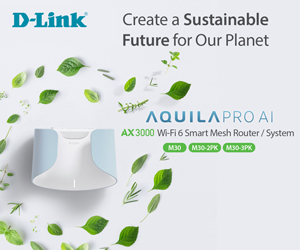3G, the precursor to 4G and 5G, will be shut down progressively by Telstra, Optus, and Vodafone, ending in June 2024. It won’t be an issue for most, but some will need to prepare.
Most mobile phones won’t be an issue as these can operate on 4G and some 5G. Some Feature phones were 3G. At worst, it means a new phone. All phones in our guide are 4G VoLTE compatible Best Android Phones 2023 – $200 to $2000.
3G does have a far longer signal reach, and those in blackspots rely on it. Currently, the only solution is to use calling over Wi-Fi; most recent phones support that. It diverts calls in and out over the Internet. Or you may need an expensive 4G/5G Antenna system to pick up a stronger signal.
What other devices do you need to look out for?
This applies to any older device using a 3G SIM card, and you or your service provider gets a Telco bill. Estimates are that more than 1 million 3G ‘devices’ are still in use.
Intercoms using the mobile phone system are the biggest worry. Tens of thousands of these in units and apartment blocks will stop working. This mainly applies to those fitted pre-2010 and will be called GSM/UTMS. You want one where you can easily program new mobile numbers as residents often change. Prices start at $1000 plus fitting. Contact your local locksmith (the best and cheapest source) and get a quote on a 4G/5G one.
Farmers are big users for remote monitoring of agricultural equipment as it is perfect for standalone devices in remote areas.
Many EFTPOS machines are 3G. Contact your bank for a new one.
Security cameras are generally 4G, but many of the older Dahua (See Chinese spycams banned at last from Government facilities) were 3G. Arlo makes an excellent 4G and Wi-fi camera. Read Arlo Go 2 LTE and Arlo Solar Panel Charger – security camera anywhere.
Remote sensors, especially weather, rainfall, sunshine, etc., may be 3G. Contact the manufacturer for upgrade options.
Vending machines often use 3G to report sales stats and flag the need for refills.
M2M (machine-to-machine) devices may be 3G. These include older traffic lights, parking metres, smart meters, and barcode readers.
Antenna systems. Existing 3G antennas won’t work with 4G or 5G so you will need a new one.
Plans – 3G was widely used as it was for low-volume machine data. You will be looking at more expensive 4G/5G data plans now.
Boat and truck owners preferred 3G because of its reach.
Many tracking devices (for animals and criminals) are 3G.
Do you have to use 4G replacement devices?
Some devices can work over the internet, but that requires the establishment of a reliable Wi-Fi home or commercial system. Devices must be within 30m (2.4GHz) to 10m (5GHz) of a Wi-Fi router or node.
Why is this happening?
The Telcos are refarming 3G bands B5/850MHz and B8/900MHz for low-band 5G. They have already refarmed B1/2100Mhz to 4G and later 5G. Read 5G fact and fiction. What you need to know.
No Telco has announced its 4G phaseout date. You can be sure some 4G bands (lower frequency with the longest reach) will be refarmed to 5G. Currently these include B28/700MHz, B5/800MHz, B9/900MHz, B3/1800Mhz, B1/2100Mhz and B40/2300MHz.
Pundits have suggested that 4G network functionality will cease around 2030 when 6G or even 7G is phased in.

Reading











2 comments
Michael Clavin
Charlie, I am an 83 years young man, I have a very old Samsung phone I know little about it other than I am informed by Amaysim and others that my service will be kaput when 3g is finished. I am confused as to what to do. I use my current phone solely for phone calls and texts and do not want the internet on it at all. I have internet on my laptop which I use for e mails and BANKING, little else. My bank’s security uses “authenticator app,” When I operate my account they send TWO separate codes to my phone to be entered on my laptop, one prior to log on to the secure site and the second to verify after comleting the transaction. A recommended phone appropriate for my need is a NOKIA 8210. My question is:- will this phone satisfy my requirements as described and in particular will I be able to continue as normal to operate my bank account without the internet being connected? If not could you recommend a suitable phone for me. Thank you in advance / enjoy your programme.
Ray Shaw
Hi 83 years young – let’s hear more about our second youth (child of the 50s Ray Shaw replying on behalf of Charlie)
The $100’dumbphone’ Nokia 8310 4G https://www.jbhifi.com.au/products/nokia-8210-4g-128mb-blue may not work (my aged Aunt has one and Telstra has told her that it wont). Your bank sends an SMS (currently over the 3G network) and that will in the future become an RCS message over the internet. So by all means look at the 8210 but you may be better off buying the dumbest smartphone you can that will allow you to make and receive calls, SMS/RCS and if you like, emails. it will also hasd a far better camera. The cheapest decent ‘glass slab’ is the Motorola g04 https://www.jbhifi.com.au/products/moto-g04-4g-64gb-concord-black for $179. If has the advantage of being able to connect to the internet (your home router) and make calls over WiFi as well. You may have to buy a USB-C Charger and cable – it can charge at up to 5V/3A/15W but any 5 to 10W USB charger will work. Also your old Samsung may have a larger SIM than the new nano-sim and you may need to get a new one from your Telco. if you need more advice feel free to contact me.